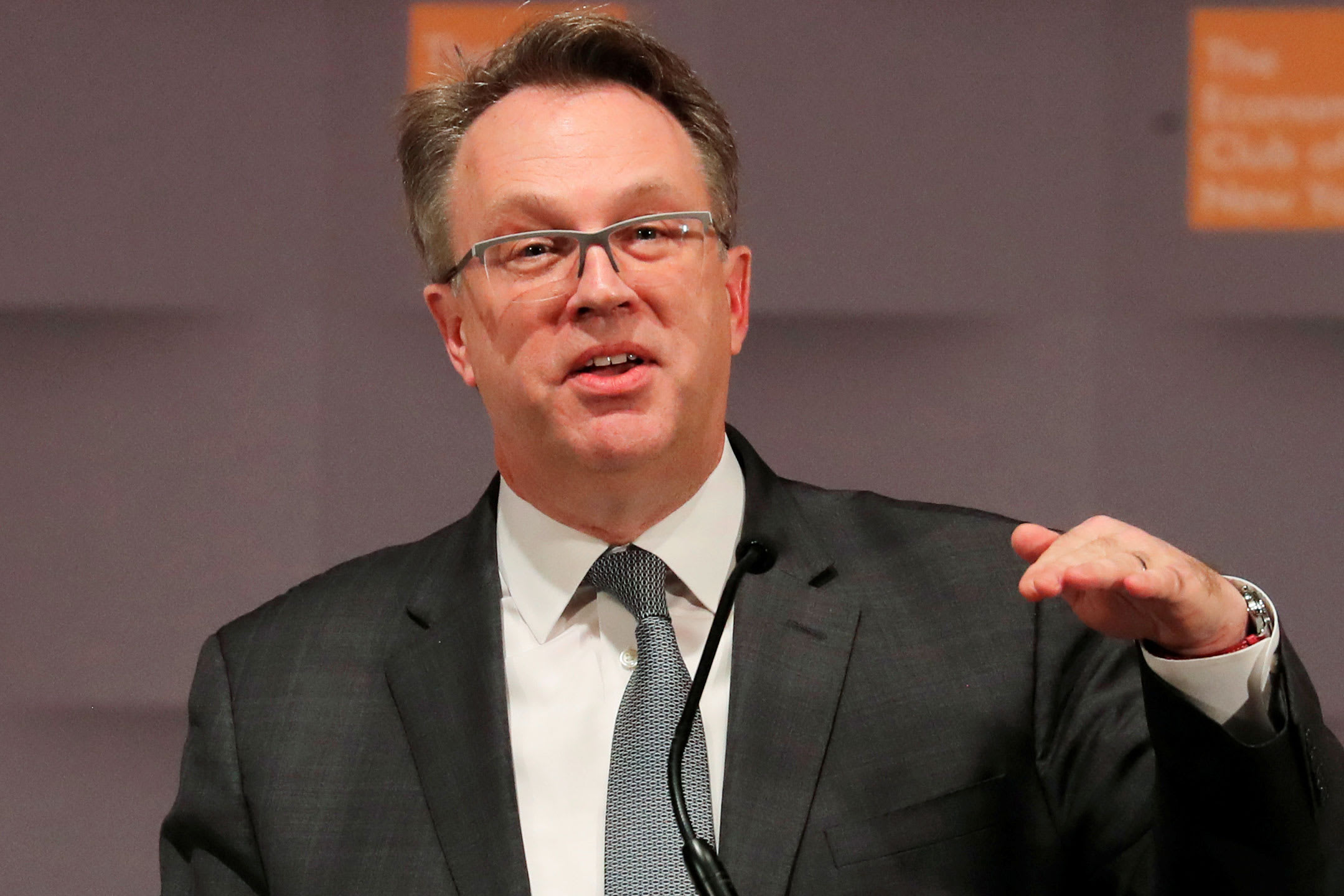
New York Fed President John Williams said the short-term lending market is functioning well, and the Fed should keep its repo operations in place just as long as needed.
The repo market is the basic plumbing of the financial system, which financial institutions can use to fund themselves by providing short-term collateral, like Treasurys, in exchange for a short-term loans.
The market ran into trouble in September and overnight rates temporarily spiked due to a cash crunch.
The Fed started overnight and longer-term open market operations to keep the market liquid and has said it would continue those operations over the new year. The Fed also began purchasing $60 billion in Treasury bills a month, adding them to its balance sheet to improve liquidity.
“We’re offering repo operations and T-bill purchases in order to provide reserves to the system. Right now, that’s working really well, and we look for that to work through year end and into January,” Williams said in an interview with CNBC’s Steve Liesman.
Some market pros blame the problems in the short-term lending market on the fact that fewer institutions are participating and those that are face strict rules on how they apply their reserves and liquidity ratios. The September cash pinch also occurred as corporations were looking for short-term cash to pay tax bills.
The Fed has said it would continue to conduct open market operations in the repo market into January. Banks are inclined to take less risk at year end, due to regulatory reviews.
“When we get into next year, there’s further decisions to be made. My own view is we still have some time before the underlying level of reserves will be at an ample level, and we’ll keep the repo operations in place, just as long as they’re needed,” Williams said.
Williams said the Fed had underestimated the amount of reserves needed. Based on surveys and outreach, the Fed’s understanding was the market needed $1 trillion of reserves to operate smoothly. But when the repo rates jumped in September, the level was at $1.4 trillion. “What we learned from that is clearly the level of reserves that which were still ample reserves is higher than what we learned from the surveys and the outreach,” he said.
Williams said the Fed is conducting more outreach to assess the requirements. “I think the institutions themselves are evolving in how they view how they are going to behave under different circumstances,” he said.
Williams noted the size of the Treasury market is growing significantly and that the repo market is growing as well.
“One of the things we are studying closely in reaching out to market participants is how is the size and distribution of those assets and trades changing,” he said. “How is that affecting market dynamics? More generally, we’re seeing changes in market structure around the repo market. We’re watching carefully, studying to see what the implications are. Right now, again, the markets are operating very well and we feel with the reserves we’re adding to the system, things are operating the way we like to see. “


 Signal2forex.com - Best robots Forex sy famantarana
Signal2forex.com - Best robots Forex sy famantarana




